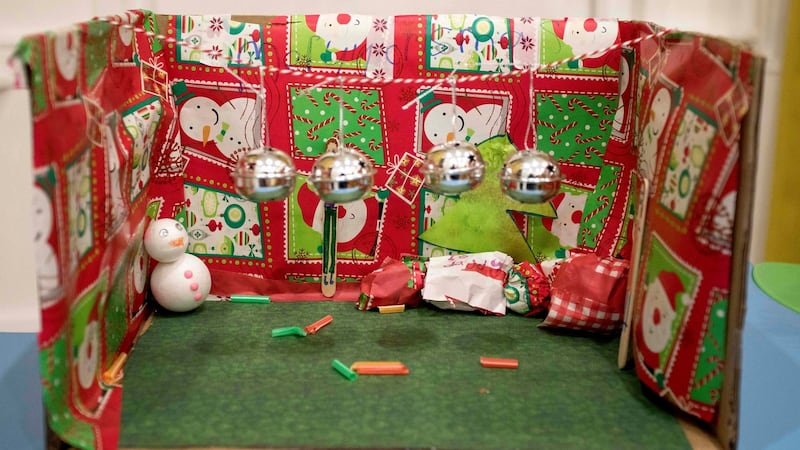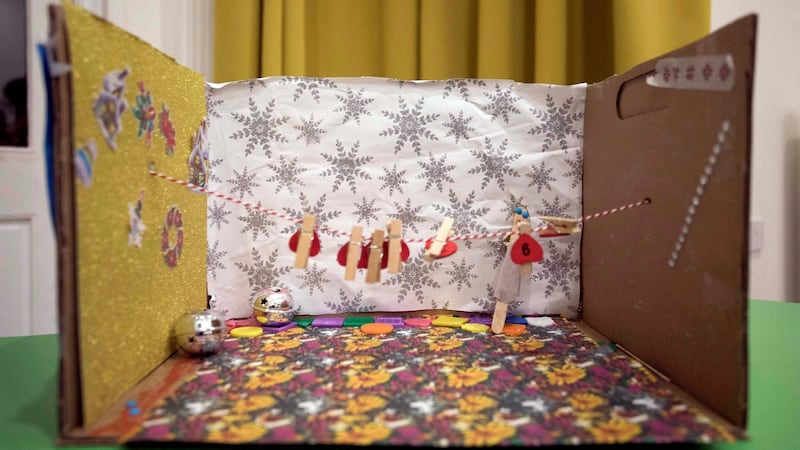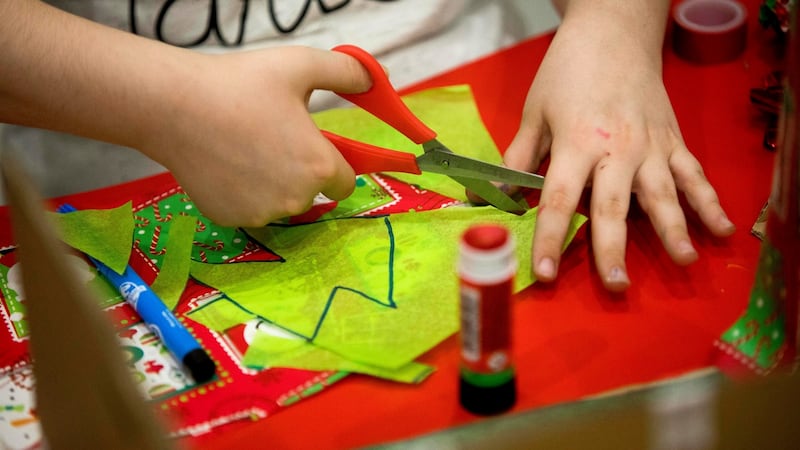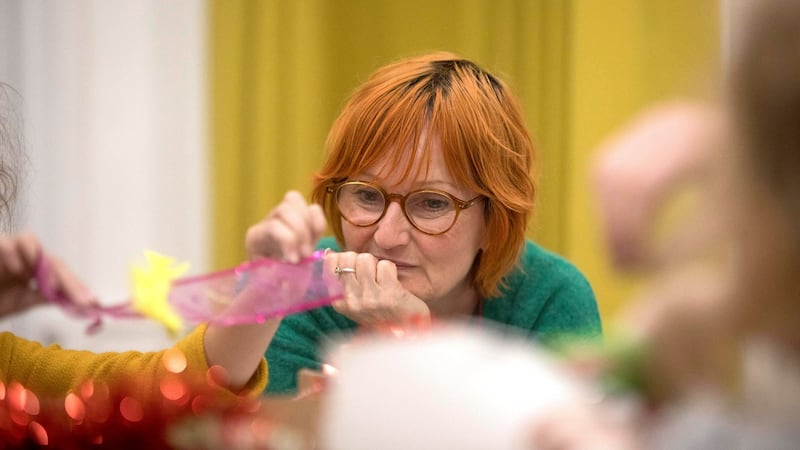Amy (7) and Rachel (4) will spend Christmas with their dad, at their nana’s. Nadia (8) will “go to a restaurant” with her mother and baby brother, and then “come back to the hotel”. Olivia (9) will be at the hotel for the day with her younger brother and parents.
The four children from three families – among the the 3,194 children, in 1,463 homeless families in Ireland this Christmas – have been living in a "family hub" in north Dublin for between seven and 14 months.
Although meals are provided, there are no cooking facilities. No kettles, toasters or microwaves are allowed in any of the 24 bedrooms, and though it is clean and brightly decorated, none of the children likes it here.

They describe the rules: “We’re not allowed be in the halls unsupervised, so we have to stay in our rooms.”
They speak about the lack of space and peace: “It’s squashy, and noisy all the time.”
And they talk about how they often have to get two buses to school, and how they “never really feel like at home”.
With the help of Focus Ireland child support workers, the girls each make a Christmas scene, using cardboard boxes, wrapping paper, glitter and cotton wool. Through such activities, explains Róisín McDonnell, services project leader, the children "relax, and begin to open up about how they're feeling, and process what's happened to them. They have a lot of worries, a lot of questions and need buckets of reassurance."
In the hub’s common room, they talk about what’s important to them about Christmas, and what they expect from it this year.
“The most important thing about Christmas is spending time with family,” says Amy. “On Christmas we go to our nana’s. It’s better there than the hotel because you can have fun and relax.”

Her sister Rachel shows her Christmas scene: a living room, with clothes pegged to a washing line. “That’s where Mammy hangs the washing. You have to do the washing at night.” Tiny plastic discs on the floor, she says, are “cookies for Santy”.
“We leave cookies for Santy under the tree because in our room there is no fireplace.”
No stockings
Nadia says she and her siblings are “not hanging stockings this year”. She will spend Christmas in the hub. “It’s boring in the hotel, but it’s not too bad. My room is at the top of the hotel.”
Olivia’s scene is her family’s room, its floor almost covered with a piece of checked cloth. “That is the bed,” she explains. She, her one-year-old brother and mother share a double bed, while her father sleeps in a single bed.
“Sometimes my brother is going to the toilet, my mother is washing dishes and my dad is making noise. It is noisy all the time. My brother’s toys are on the floor.”
Amy agrees the rooms are “squashy”. Her scene is the living room “when I get a house”. Lollipop sticks depict her, her father and siblings.
“I’ll have my own room, and I am going to have a vanity unit and dressing table. My nan says she’ll buy them for me. It’s not too bad here, but I’d prefer a house. We’ve been homeless for nine months.”
They all came into homelessness from the private rented sector. In one case their family’s landlord increased the rent beyond what they could afford. In another the landlord gave them notice to quit, and relet the property at a higher rent, while the third family had to leave their home after their family circumstances changed.
In October 2014, when The Irish Times first interviewed some of Dublin's homeless children, they numbered 680 in 307 families. Although Enda Kenny, then taoiseach, said no child should be homeless, their numbers have increased 256 per cent.
The latest figures, for October 2017, show 2,425 children in 1,139 families in emergency accommodation in Dublin. Of these, 717 (63 per cent) were headed by lone parents.
In the intervening three years, says Ms McDonnell, “levels of despair and hopelessness among families have greatly increased”.
“The dramatic difference is that there are so many more families and so much less housing. While three years ago we were feeling the squeeze accessing housing, there were options. Now the homes aren’t there, and if they are, there are at least 20 people ahead of you in the queue. We are moving 30-40 families a month out of homelessness, but 80-90 are coming in. It almost feels as if housing, a solution, doesn’t exist.”

Huge guilt
In October 2014 families could expect to spend about six months in homelessness, but now they face “2½ to three years”.
An added layer of complexity, Ms McDonnell adds, is a growing “nervousness” about taking homes in the private rented sector.
“They are thinking if they go back to the private-rented sector they could end up back in homelessness a year later. They really don’t know if they could go through that again, or put their children through it again. There is huge guilt, shame, self-doubt, through no fault of their own.”
Asked about suggestions that families were presenting as homeless to speed their access to social housing, she says if it’s happening it’s a “very small number of cases, and those who do will leave homelessness if they can, because it’s just so hard and so damaging”.

A spokeswoman for the Dublin Region Homeless Executive said that although they were an important first response for families who become homeless... hubs [were] not the long-term housing solution ... Families will move into houses and apartments that will be provided under social housing supports once supply becomes available.”
Agreeing, Ms McDonnell says: “Until there is a massive increase in housing, it’s really hard to know when the increase in the number of homeless children is going to end”.





